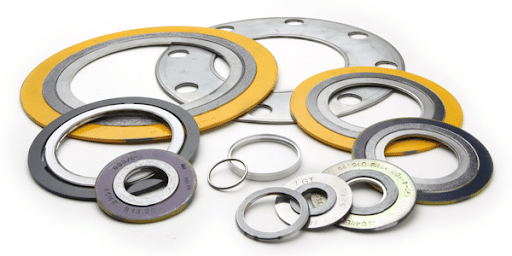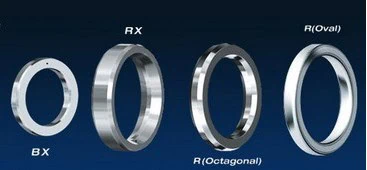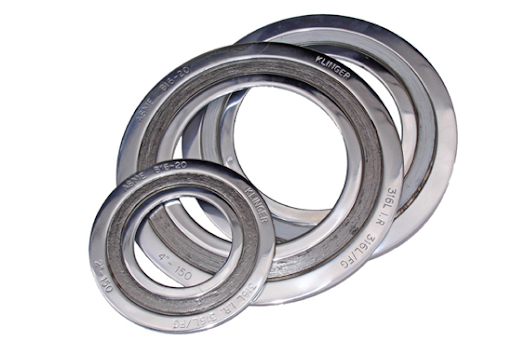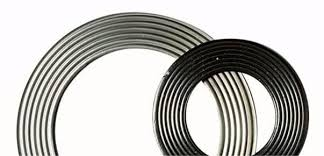Leaks occurring between metal surfaces result in equipment malfunction, production downtime, and safety risks. Metal gaskets are used to seal these interfaces. However, if you select the wrong gasket designed for a specific application, then you are guaranteed to have problems. For example, a gasket that works for water in a low-pressure piping system will fail in a high-pressure steam system. A gasket designed for low-temperature steam might melt instantly in a high-temperature steam system. This guide describes different metal gasket types, what makes each design unique.

Types of Metal Gaskets
There are different metal gaskets types. TMNetch specializes in manufacturing precision metal components made of stainless steel, titanium, copper, nickel, and aluminum. With photochemical etching technology, they can produce components with a thickness range from 0.01 mm to 3.0 mm and ±0.03 mm tolerance. Contact TMNetch for custom metal gaskets.
Flat Gaskets
Flat gaskets comprise the simplest and one of the more common types of metallic gaskets.

Applications:
Flat gaskets are among the metal gasket types that work best in low to moderate-pressure systems where extreme sealing is not required. Flat gaskets are probably the most common metallic gaskets; they are found in HVAC equipment, general machinery, and piping systems. In the automotive field, valve covers, oil pans, and oil sumps utilize flat gaskets. Various electronics use ultra-thin flat gaskets for electromagnetic shielding and flashing.
Limitations:
Flat gaskets do not perform well when the flange surface is damaged or warped. Flat gaskets can blow out or fail under high pressure. Temperature cycling can also loosen the seal eventually.
Ring Joint Gaskets
Ring joint gaskets, or RTJ gaskets, have a design consisting of a solid metal ring. They are placed inside grooves. The metal-to-metal contact allows for an exceedingly tight seal.

Types of Ring Joint Gaskets:
- Oval cross-section: Most commonly used design
- Octagonal cross-section: Has a higher pressure rating
- Round cross-section: For special applications
Applications
Ring joint gaskets can withstand pressures greater than 20,000 PSI. Due to their design, they are able to face extreme pressures and temperatures while maintaining their seal. The oil and gas industry prefers this type of gasket for wellhead equipment and high-pressure pipelines.
Spiral Wound Gaskets
Spiral wound gaskets are constructed with metal and filler material in layers that alternate with one another. Their structure features a V-shaped metal strip that has spiraled, soft filler material that alternates between layers. This results in a structure that combines strength and flexibility.

Advantages:
Spiral wound gaskets recover from the effects of compression better than flat gaskets. Among metal gasket types, spiral gaskets can handle thermal cycling and flange movement while still providing an effective seal. The design performs from cryogenic temperatures and through ranges achieving 1000 °C, which offers flexibility.
Common Uses:
Chemical processing plants use spiral wound gaskets. Power generation facilities utilize spiral wound gaskets, and also in boiler and turbine equipment, where metal gasket types are used for critical piping applications. This design is suitable for both raised-face and flat-face flanges.
Kammprofile Gaskets
Kammprofiles gaskets have a serrated metal core that is soft, a facing layer(s), and have serrations.
Applications
Among metal gasket types, the most durable is Kammprofile. Its thermal design benefits from the heat exchange. Pressure vessels rely on Kammprofile gaskets for reliable long-term sealing and service due to acid or base chemistries.
Metal Jacketed Gaskets
Metal jacketed gaskets consist of a soft filler core encased in thin metal sheeting. The metal jacket shields the filler from chemical exposure.
The metal jacket styles are:
- Single-jacket: Metal covering one side
- Double-jacket: Metal covering both sides
- Corrugated jacket: Adds flexibility
Applications
Metal jacket gaskets are ideal when working with rough or damaged flat surfaces where the gasket interfaces with the system. The soft filler core will yield to fill the void left by imperfections, while the metal jacket provides mechanical strength and durability. Common applications for jacketed gaskets are steam systems, heat exchangers, valve bonnets, etc.
Corrugated Metal Gaskets
Corrugated metal gaskets are flat sheets of metal stamped with a wavy profile. The corrugations provide flexibility and improve sealing ability.

Here are the types of corrugated metal gaskets:
- Single corrugated: One wavy metal layer
- Double corrugated: Two layers with the corrugations not aligned with one another
- Filled corrugated: Soft material positioned between two corrugated metal layers
Applications:
Corrugated metal is a very common design utilized in exhaust systems as it provides flexibility and thermal resistance for the conveyance of a hot gas. The thermal conductivity advantages also transfer to heat exchangers and industrial applications, where conformity to mating sections is critical for maintaining integrity. Corrugated gaskets are the preferred application in the automotive and aerospace industries, where weight and internal space are considerations.
How to Choose the Right Metal Gasket Type
Here are some factors you should consider when choosing between various metal gasket types:
Pressure:
- Low pressure (below 150 PSI): Flat or corrugated gaskets will likely work well enough.
- Medium pressure (150-600 PSI): Spiral wound or Kammprofile gaskets offer better performance. High pressure (above 600 PSI): A ring joint gasket is necessary.
- Extreme pressure (above 10,000 PSI): A ring joint gasket is the only option that will seal reliably.
Temperature:
- Moderate (below 200°F): Most types of metal gaskets will work fine.
- High temperature (200-600°F): Spiral wound, Kammprofile, or metallic jacket gaskets.
- Extreme temperature (above 600°F): Spiral wound (with Inconel winding) or ring joint gaskets.
Chemical Exposure:
For the corrosive environment, 316L stainless steel or Inconel would be the type of material to use. The type of gasket material is more important than the gasket type itself.
TMNetch Chemical Etching
TMNetch offers precise metal components with tight tolerances using an advanced chemical etching process. You can get custom metal gaskets with accurate details. They use chemical etching so you get complex geometries without mechanical stress. Contact TMNetch to get a quote for your custom projects.
FAQs About Metal Gasket Types
What is a metallic gasket?
Metallic materials include stainless steel, copper, aluminum, and other specialized metal alloys. Metal gaskets can withstand higher temperatures and pressures than a rubber or fiber gasket.
When to use a metal gasket?
Metal gaskets should be employed when the temperatures are above 200° C, or the pressure is higher than 150 PSI. They are required for corrosive chemical environments and situations in which non-metal materials could degrade.
What is the difference between 304 and 316 gaskets?
304 stainless steel gaskets will readily resist general corrosion, and will operate in temperatures to 800° C. 316 stainless steel gaskets include molybdenum, which improves the gaskets’ resistance to chlorides, acids, saltwater, and other corrosive environments. Marine and chemical process applications prefer 316 stainless steel gaskets, while 304 stainless steel would work for general industrial applications.
What are the three types of head gaskets?
Head gaskets are generally categorized into three designs: solid metal (copper or stainless steel) head gaskets with no layers, multi-layer steel (MLS), which has multiple, thin steel layers, or composite gaskets that have metal combined with non-metal materials.
Conculsion
When selecting metal gasket types, we first must understand what each design does best. Pressure, temperature, and other conditions narrow your options. TMNetch manufactures precision metal gaskets using photochemical etching to tolerances of ±0.03mm and thickness ranges of 0.01-3.0mm. They offer prototypes within 6 hours, production runs within 3 days, and make custom designs.
